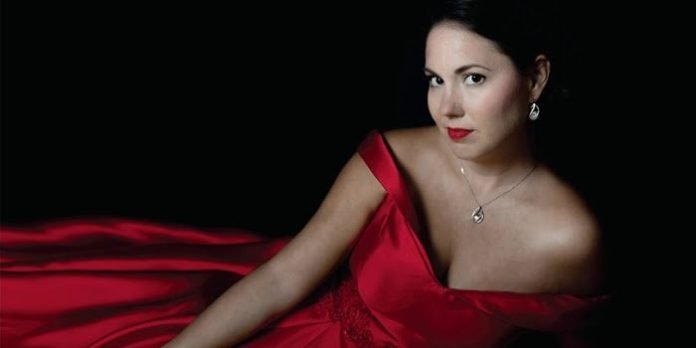Stunning soprano Myriam Leblanc and versatile flautist Grégoire Jeay, Quebec-based co-founders of Ensemble Mirabilia, were joined by four local, equally outstanding musicians to create L’Eterno Ritorno (Eternal Return) at Christchurch Cathedral under the banner of Early Music Vancouver. Like the name Mirabilia, the February 16 concert was wonderful, marvellous and remarkable. Spanning four centuries and every aspect of love, the programme celebrated how little those aspects have changed.
It began mournfully with Luigi Rossi saying love is torment, then immediately danced into Claudio Monteverdi’s flirtatious ciaccona that ends with “Let your laughter heal me.” Leblanc’s ability to switch from one emotion to another, her commitment to the poetic text, her skill at storytelling and her expressive vocal prowess were spell-binding, particularly in Antonio Vivaldi’s Piango, Gemo when she sang, “I weep, I groan, I sigh, I suffer.”
The programme could not have been more varied. Each musical gem was underpinned by Mélisande Corriveau on bass viol and Alexander Weimann on continuo organ with an insistent bass line, not unlike a throbbing heartbeat. Chloe Meyers gracefully supplied ornamentation over it on violin along with Antoine Malette-Chénier on baroque harp, also known as triple harp because of its extra set of strings tucked between the others, requiring extraordinary dexterity and small fingers to play it. This overall structure is the basis of the chaconne (aka chacona, ciaccona, ciaconna, ciacona and chacony).
Jeay’s accomplished musicianship also shone when he played his composition of Chaconne in D Minor on his Baroque wooden flute and accompanied Leblanc on recorder and frame drum.
This perfect Valentine’s tribute continued with the Beatles’ I Want You, also written in the shape of a chaconne. The wooden flute and triple harp may have made way for the electric guitar and keyboard, but the structure is identical.
One last musical gem can’t go unmentioned. Leblanc invited EMV’s artistic director and celebrated soprano nominated for a 2024 Grammy, Suzie Leblanc (no relation), to join her in an exquisite duet, which she followed up with a second invitation for an encore to end the evening finally. Because of the beauty of the moment and the honour of singing with her idol since childhood, tears of joy welled in Myriam Leblanc’s eyes, alongside most everyone else’s. It proves that the emotion that inspired Rossi, Monteverdi, Vivaldi, and others in the past still inspires us today.

